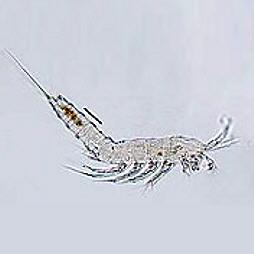Posted 30 March 2009

Pin-point sized crustaceans preserved in alcohol at The University of Western Australia for almost 20 years have recently been identified as a species unique to sites on the Gnangara Mound.
But unfortunately, the species is probably now extinct, according to the UWA animal biologist who identified them.
Dr Danny Tang from UWA's Department of Zoology published his work, co-authored with his colleague Dr Brenton Knott, in the prestigious journal Zootaxa recently. The work examines the disappearance of species in the Mound due to environmental pressures.
"Stretching from the Swan River to Moore River, the coast to the hills, the 2,200 square kilometre Mound hosts several caves around Yanchep, a string of lakes and a series of tumulus springs," Dr Knott said. "The ground water below it has been used for market gardens, pine plantations and urban development. Until fairly recently, underground streams coursed through the caves where, amongst the matted tree roots, lived several varieties of freshwater crustaceans, including copepods."
The two researchers have also recently completed a report for the Department of Environment and Conservation on the taxonomy of the copepods in the Yanchep caves and the Ellen Brook springs. Their work will inform decisions on the future land and water-use options on the Mound.
"The gradual disappearance of the water, the roots and the animals is cause for concern because it points to serious environmental degradation," Dr Knott said. "As well, the crustaceans are evidence of the evolution of life forms - they existed when Australia was part of Gondwanaland - and are therefore important to science. Under the microscope, another group of shrimp-like crustaceans known as amphipods reproduce sexually and the female carries the fertilised eggs in a brood pouch between her legs."
The paper identifies copepods from 23 sites - 12 cave, three bore, five spring and three surface-water locations - within the Mound region. Some of the species were documented as long ago as 1820 while others were recorded for the first time and identified as being endemic to the region, and particularly to tuart root mats.
"Restoring the root mats and maintaining permanent water flow within the Yanchep caves, as well as minimising urban development near the Ellen Brook springs, are essential to protect the copepod species, particularly the endemic ones, inhabiting these unique groundwater environments," Dr Tang said.
Source: University of Western Australia

Professor Andy Baker features in American Water Resources Association ‘Water Resources Impact’, September 2020 edition.

The Connected Waters Initiative (CWI) is pleased to welcome Taylor Coyne to its network as a postgraduate researcher. If you’re engaged in research at a postgraduate level, and you’re interested in joining the CWI network, get in touch! The CWI network includes multidisciplinary researchers across the Schools of Engineering, Sciences, Humanities and Languages and Law.

The Grand Challenge on Rapid Urbanisation will establish Think Deep Australia, led by Dr Marilu Melo Zurita, to explore how we can use our urban underground spaces for community benefit.

On the 21 August 2020, CWI researchers made a submission to the National Water Reform Inquiry, identifying priority areas and making a number of recommendations as to how to achieve a sustainable groundwater future for Australia.

Results published from a research project between the Land Development Department (LDD) Thailand and UNSW has demonstrated how 2-dimensional mapping can be used to understand soil salinity adjacent to a earthen canal in north east Thailand (Khongnawang et al. 2020).